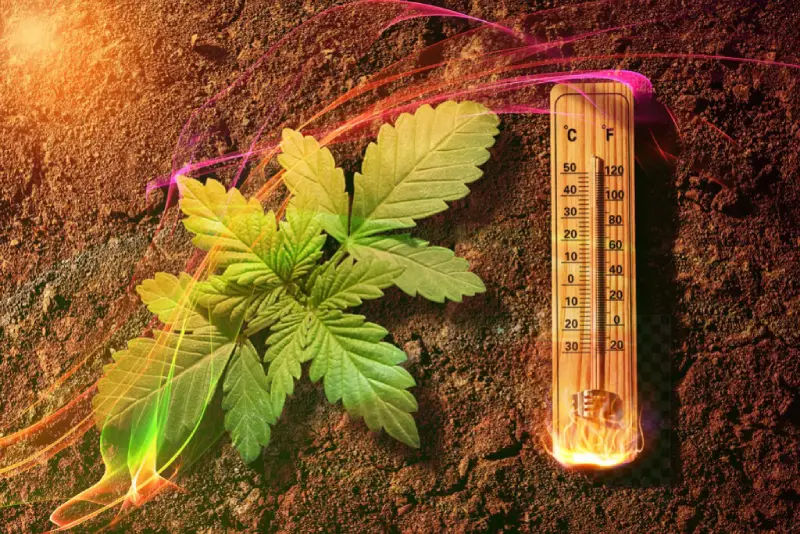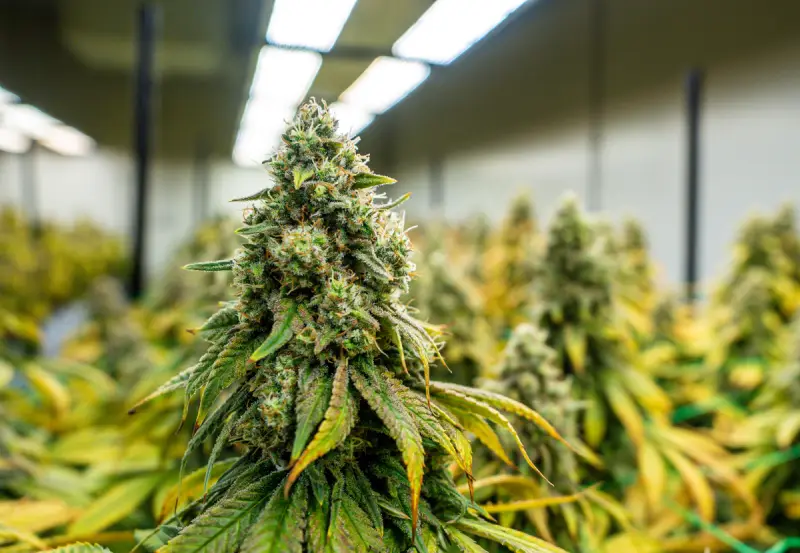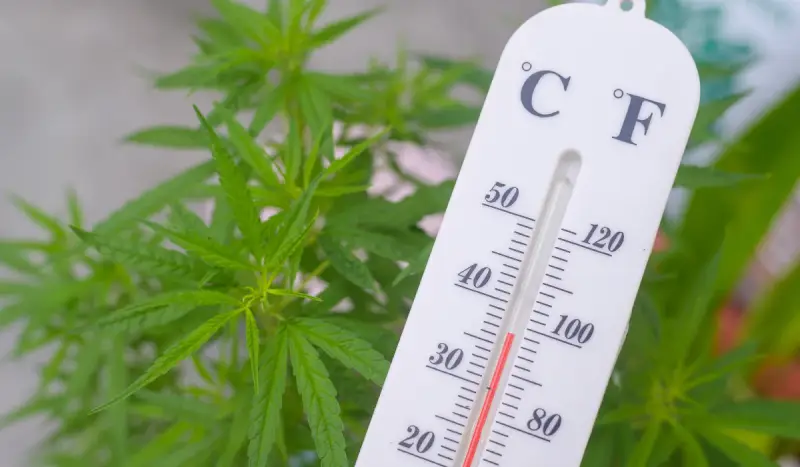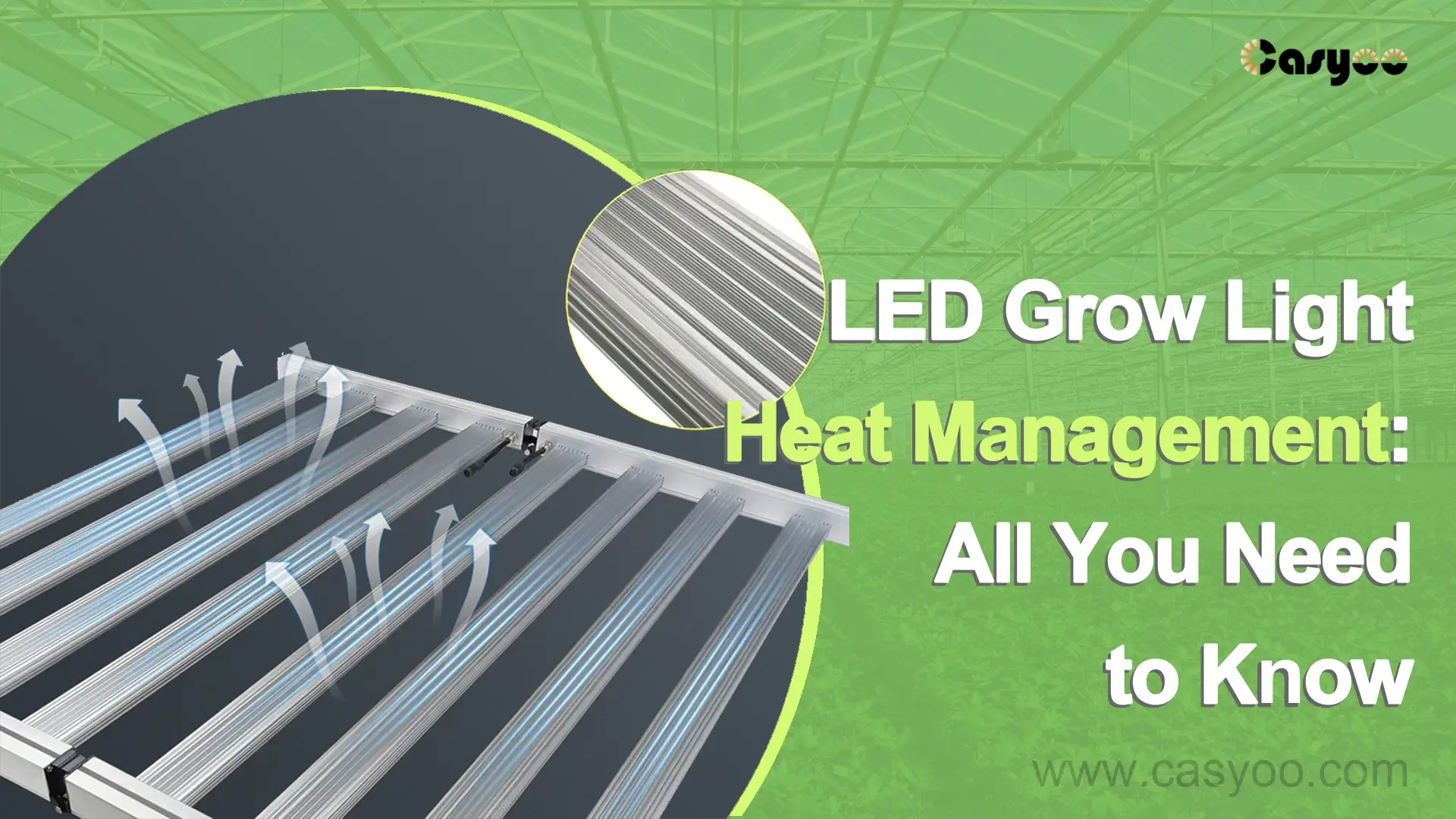Heat is essential to plant growth because it affects several important biochemical processes, such as transpiration, respiration, and photosynthesis. However, too much heat will impede these processes and harm the plant growth.
LED grow light heat management is even more important. LED grow lights provide concentrated light that is efficiently absorbed by plants, while producing less heat than traditional grow lights. Although LED grow lights produce less heat, they still release heat, which must be properly dispersed to prevent negative impacts on plant growth. Improper heat management can result in decreased efficiency, harm to your plants, and even cause a fire.
In this blog, we will delve into the world of heat management of LED grow light systems. Let’s get started!
The Effect of Overheating on Plants

Plants may be harmed by excessive heat in LED grow light systems by:
Decrease in Photosynthetic Efficiency
The rate of photosynthesis falls when the temperature rises over the ideal range. This leads to a decrease in energy output, which might cause stunted growth and decreased yields.
Increasing Transpiration
Plants lose water through transpiration more quickly in high temperatures. This may result in reduced nutrient uptake and dehydration, which will lower the general health and vigor of your plant.
Triggering Oxidative Stress
High temperatures can lead to the production of reactive oxygen species (ROS)inside plant cells, which can result in oxidative stress. This may harm cellular components, and disrupt metabolic activities and impede plant growth.
Disrupting Hormone Balance
Too much heat will alter the balance of hormones in plants, including auxins, cytokinins, and so on. This may do harm to seed germination, root growth, flowering, and fruiting.
The Benefits of Proper LED Grow Light Heat Management

Maintaining the ideal temperature range in LED grow light systems offers a multitude of benefits, including but not limited to:
Boosts Energy Efficiency
LED grow lights can run more effectively and save energy by correct heat management.
Improves Plant Growth
Proper heat management helps to establish the ideal growing environment, reducing stress and guaranteeing healthier plants with higher yield and quality.
Decreased Risk of Plant Stress and Damage
Plants are susceptible to stress and potentially irreparable damage from severe temperatures. Heat management can reduce these dangers and promote plant growth.
Prolonged Service Life of LED Grow Lights
By keeping the LED grow lights from overheating, you can reduce stress on their components, lead to prolonging their service life and lessen the frequency of their replacements.
Enhanced Performance and Reliability
LED grow lights are more reliable and effective since they don’t overheat and keep a constant light output and spectrum.
Lower Running and Maintenance Costs
By lowering the chance of LED damage, proper cooling lowers the cost of maintenance and replacement.
Tips for LED Grow Light Heat Management

Sufficient Ventilation and Airflow
Having enough ventilation and airflow is essential for heat management. To maximize the cooling process, take into account the following:
- Positioning: Arrange several fans to guarantee that the grow room has consistent airflow.
- Exhaust Systems: Installing an exhaust system will help to drive out heated air and encourage the intake of fresh air.
- Ventilation Ducts: Utilize ventilation ducts to dissipate the heat from the grow room.
Thermal Pads and Heat Sinks
In LED grow lights, heat sinks and thermal pads contribute immensely to heat dissipation.
- Heat Sinks: Mount heat sinks on the back of LED boards to disperse extra heat.
- Thermal Pads: Use thermal pads between the LED boards and the heat sink to improve heat transfer.
Appropriate Distance Between the Lights and Plants
Hang your LED grow lights at a proper height is essential to avoid heat-related problems. Keep the following in mind:
- Height Adjustment: adjust the distance between the lights and your plants in different growth stages.
- Footprint Coverage: Make sure your LEDs can evenly illuminate the entire growing area.
Timers and Dimmers
Managing the duration and intensity of the light use can aid in efficient heat management.
- Timers: Use timers to control the duration of the grow light to avoid undue heat accumulation
- Dimmers: Use dimmers to adjust the intensity to lessen heat production.
Heat-Resistant Grow Room Design
- Reflecting Surfaces: use reflecting materials to maximize light distribution and minimize heat absorption.
- Insulation: Insulate your grow space to keep temperatures steady.
- Cooling Systems: install cooling systems like air conditioners to maintain optimal temperatures.
Conclusion
Keep in mind that heat is a powerful enemy that can affect your plants’ health and yields in addition to the effectiveness of your grow lights. Your indoor gardening endeavors will provide you with abundant yields and lush greenery, if you implement adequate ventilation and airflow, employ heat sinks and thermal pads, keep proper distance, make use of timers and dimmers, and create a heat-resistant grow space. If you have any questions, feel free to contact us.




